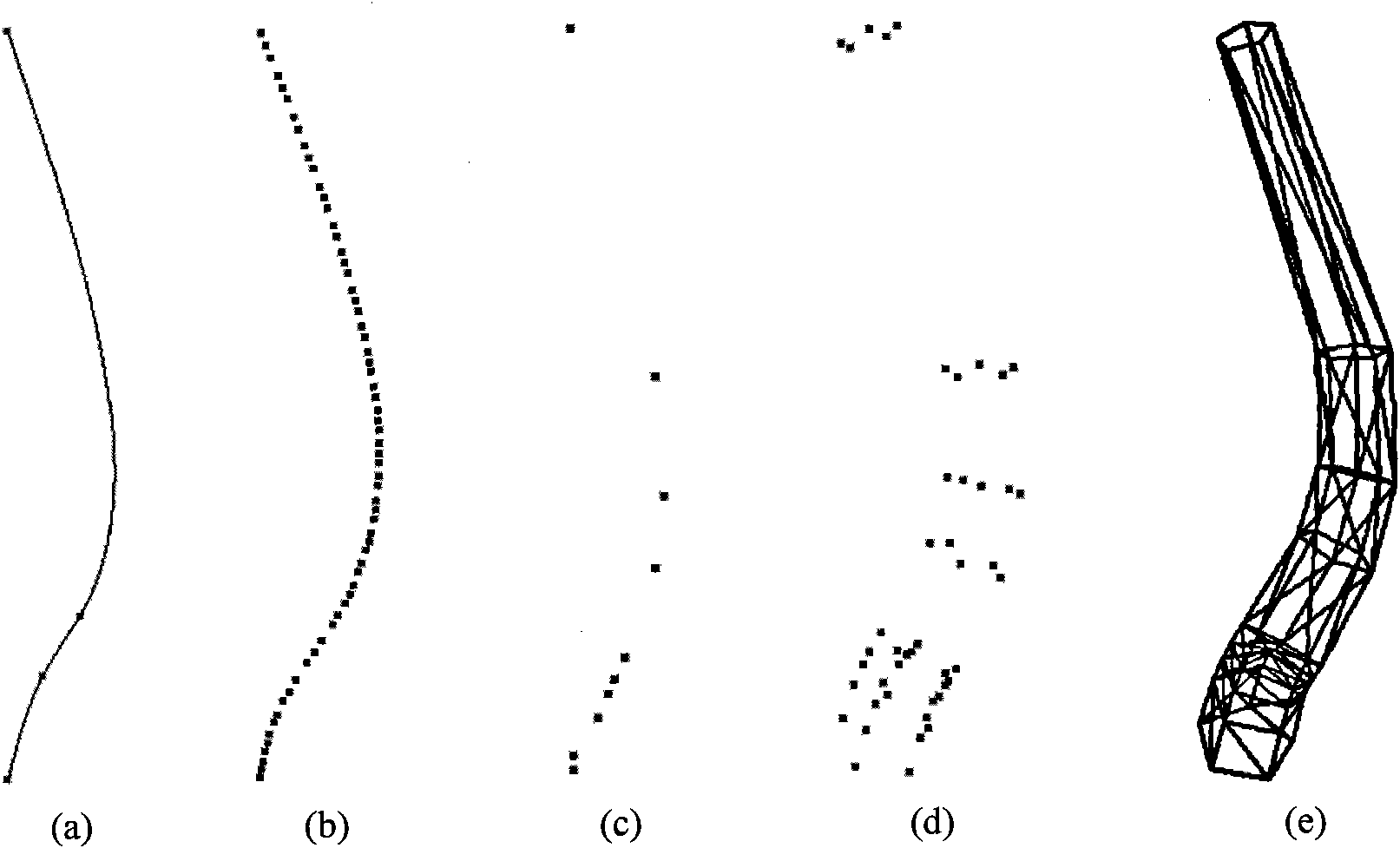Self-adaptive gridding method and self-adaptive gridding system of geometric curved surfaces of three-dimensional plant organs
A plant organ and self-adaptive technology, applied in the field of 3D modeling, can solve the problems of lack of pertinence, low calculation efficiency, and large memory requirements of the algorithm, and achieve the reduction of the number of panels, wide application and universality strong effect
- Summary
- Abstract
- Description
- Claims
- Application Information
AI Technical Summary
Benefits of technology
Problems solved by technology
Method used
Image
Examples
Embodiment Construction
[0045] The specific implementation manners of the present invention will be further described in detail below in conjunction with the accompanying drawings and embodiments. The following examples are used to illustrate the present invention, but are not intended to limit the scope of the present invention.
[0046] exist figure 2 and image 3 middle, figure 2 (a) is the shaft skeleton and its deformation, (b) is the half profile-shaft skeleton and its deformation, (c) is the full profile-shaft skeleton and its deformation; figure 2 (a) is the skeleton model, (b) is the pre-segmentation point, (c) is the point retained after adaptive detection, (d) is the surface point set, and (e) is the grid model.
[0047] like Figure 1 to Figure 6 As shown, according to the three-dimensional plant organ geometric surface adaptive meshing method of this embodiment, it includes the following steps:
[0048] S1, classify plant organs according to their appearance characteristics, and ...
PUM
 Login to View More
Login to View More Abstract
Description
Claims
Application Information
 Login to View More
Login to View More - R&D Engineer
- R&D Manager
- IP Professional
- Industry Leading Data Capabilities
- Powerful AI technology
- Patent DNA Extraction
Browse by: Latest US Patents, China's latest patents, Technical Efficacy Thesaurus, Application Domain, Technology Topic, Popular Technical Reports.
© 2024 PatSnap. All rights reserved.Legal|Privacy policy|Modern Slavery Act Transparency Statement|Sitemap|About US| Contact US: help@patsnap.com










